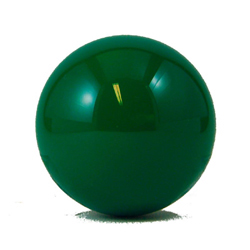
Your complimentary articles
You’ve read one of your four complimentary articles for this month.
You can read four articles free per month. To have complete access to the thousands of philosophy articles on this site, please
Tallis in Wonderland
Time & Change
Take the time to allow Raymond Tallis to change your view on time and change. Or leave it unchanged.
A quick glance through back issues of Philosophy Now tells me that I have managed to resist writing about time for a full year. This seems a decent interval, so I hope you will forgive me for returning to a topic which has been my main philosophical preoccupation for the decade I have been writing Of Time and Lamentation: Reflections on Transience, which is due out next Spring. One of its many concerns has been the puzzling relationship between time and change.
It seems that change and time are inseparable: changes take time; are located and ordered in time; and they are separated by time. The inseparability of time and change is a kind of logical truth. Time, it has often been said, stops everything from happening at once. If everything happened at once, the material world would seem to be in a permanent state of self-contradiction. And agency would impossible: I would be simultaneously setting out for and returning from holiday. But there is a flaw in this way of conceiving things, flagged up by the phrase ‘at once’. This phrase itself implies a time relationship – simultaneity. Time, it seems, would not be required to stop everything happening at once (this is the kind of thing that passes for a joke in metaphysical circles) if there were no time in the first place.
There is, of course, a more serious point behind this assertion. Time allows difference without contradiction. Think of pairs of apparently incompatible propositions: ‘The ball is in position 1’ and ‘The ball is in position 2’, or ‘The ball is green all over’ and ‘The ball is red all over’. All four propositions can be true if we add ‘at time t1’ and ‘at time t2’ to the first and second members of the pairs respectively. Time, it appears, is permissive of change.
Permissiveness Problems

There are at least two problems with this seemingly innocent truism. The first is that it is difficult to see how we get from a general permissiveness to the distinctive aspects of time we have already alluded to: duration (the quantity of time changes take); location (when the changes occur); and temporal relations between events (simultaneity and precedence). The second is the danger of translating permission into causation. There are many problems with the idea of time as a cause, or, more generally, of time being characterised by something it does.
If time itself really were a cause, then every event would have two causes: the cause in the usual sense of ‘a prior event’, such as lightning causing thunder; and a second cause, time. This would be an example of what philosophers call ‘causal over-determination’. More worryingly, it is difficult to see how the two causes could work together to assume joint responsibility for the effect. How, anyway, would time operate at a particular point (in space and time) to bring about a particular effect? And given that time is homogenous and is present at all times, it is even more difficult to see how it could make a distinctive contribution to the unfolding of events, helping to cause this event rather than that. There is also an important ambiguity in the notion of time as a cause, identified by W.H. Newton-Smith in The Structure of Time (1980). Newton-Smith distinguishes ‘date causation’ (with each moment in time putatively bringing its distinctive causal contribution to the unfolding of events) from ‘duration causation’ (where the causal contribution of time would be a reflection of the quantity of time deployed). The idea of date causation, however, merely reflects the fact that certain times are propitious for the occurrence of certain events. This plausibly reduces to the idea that certain circumstances that happen to be prevailing at one time rather than another predispose to certain events. With this interpretation, we can cut out the middle man – time – from the causal process. It is not ‘12 noon on 5th June 2016’ that causes the events that happen immediately after 12 noon, but how things are, and what is already ongoing, at 12 noon.
It is not time, but fibroblasts or the spirit of forgiveness, that heal wounds. And perhaps we need to row back from the idea of time as generally ‘permissive’ of change. Many things are not permitted (even independent of the constraints of logical contradiction). What’s more, a global permissiveness would permit nothing in particular: if everything were permitted, nothing could happen. Worse still, the idea that time itself prevents contradiction imports the logic of propositions (‘not (p and not-p)’) into the material world, including those parts of it, such as the universe prior to sentient beings (which is most of its history), that are innocent of logic, discourse, and consciousness.
Is Changeless Time No Time At All?
So even though change clearly takes time (as all changes occur at a finite rate), time does not seem to make change. But is the reverse true? Does change make time? Should we agree with Aristotle in his Physics that “time does not exist without change,” such that time without change is the equivalent of dehydrated water? Could there be periods when time ‘passes’ and yet nothing at all is happening in the entire universe? Is it legitimate to admit the possibility of a temporal vacuum unoccupied by changes, analogous to a spatial vacuum unoccupied by objects or fields?
Some thought experiments – such as that by Sydney Shoemaker in ‘Time without Change’ (Journal of Philosophy, 1969) – defend the conceivability of temporal vacua by envisaging them as being achieved by a stepwise ‘freezing’ or ‘emptying’ of the world part by part. This is a way of getting round the difficulty of the necessary disappearance of the observer (and consequently, observations) in a wholly frozen universe. There has to be an unfrozen outside to observe the temporally frozen part of the world since (as is commonly believed) observations are the result of causal interactions between the observer and the observed. Shoemaker circumvents this difficulty by imagining that the universe has three parts, A, B, and C, which take it in turns to freeze. Crucially, their freezing has different periodicity: A freezes for a year once every three years, B once every four years, and C once every five years. There will be one year in sixty in which all three regions are frozen at once, and the entire universe is changeless. While the wholly frozen universe cannot be observed, its occurrence can be inferred.
Unfortunately, the thought experiment does not work. The inhabitants of the universe are expected, as an inference from their observation of the frozen parts A, B, and C, to arrive at the conclusion that once every sixty years there would be a total freeze. But what basis would there be for observation of the frozen state even of the parts? How can anything which does not emit any energy (because nothing is happening in it) be observed from without? What’s more, if the entire universe became frozen at Year 60, there would be no grounds for thinking of the duration of the freeze as a definite period of time, between Year 59 and Year 61: there would seem to be a direct movement from Year 59 to (so-called) Year 61. At any rate, there would be no measurable time periods in the vacuum, because measurement requires, indeed is, a set of events. ‘A year’ there would be empty of meaning. There would be nothing to distinguish a period of total freezing in the entire universe that lasted an instant from one that lasted forever. In addition, as Ken Warmbrod has pointed out, there would be nothing occurring to re-start a frozen universe, so no freezing could be confined to a year, or to any non-infinite period of time (‘Temporal Vacua’, The Philosophical Quarterly, 2004).
Relatively Insubstantial

Irrespective of whether Shoemaker’s thought experiment is coherent, it is useful for examining whether time can be conceived as existing independently of the possibility of change. Is Richard Feynman’s joke that “time is what happens when nothing else does” based on a fallacy? Is time something that happens? Is it, as Isaac Newton claimed, something “of itself and from its own nature” that “flows equably and without regards to anything external”? This is the so-called substantivalist view of time. The opposite view, originally associated with Leibniz, and underpinning the Special Theory of Relativity, is that time boils down to the relations between events, and hence cannot be separated from them.
Those who subscribe to a relational theory of time get into trouble when they specify what kinds of relations they are talking about. The relations are of course temporal relations. But to reduce time to, for example, simultaneity exhibited in successive moments, is not to reduce it at all. So the issue of whether time is separable from change – from events – or whether it is in some sense the product of events, remains unresolved.
Anyone looking to physics for assistance is going to be disappointed. Einstein began as a relationist, denying that space and time were independent of events and rejecting Newton’s idea of space and time as an absolute background or ‘frame of reference’. In his fully developed General Relativity, however, space and time have morphed into the more substantial space-time. Now, as twin aspects of curved space-time, space and time are active players in the universe, having observable effects on the motion of material objects in the form of gravitational and inertial forces. And things get even more messy and confusing. As Lawrence Sklar has argued, a consistent reduction of space-time to relations between events threatens to “move ordinary matter into the same dispensable category as substantival space-time…” (Philosophy and Space-Time Physics, 1985). Ordinary matter starts to look as insubstantial, as unreal, as space-time.
The problems began as they so often do, with the solution to another problem. The idea of time and space as absolute containers separate from the changes occurring in them was offensive to empirical science because empty time and empty space would be unobservable. Ernst Mach, the philosopher-physicist who inspired Einstein, argued that we could not directly measure the quantity of time. “Quite the contrary, time is an abstraction, at which we arrive by means of the changes of things.” Clocks do not directly measure time: they are sources of events that are compared with other events.
Still In Search of Lost Time
The relationship between time and change remains elusive. Giving time priority over change, and imagining time continuing in the absence of events, have unsatisfactory consequences. It is no less unsatisfactory to see time as generated from, or subsisting in, the relations between events, if only because this leaves us with the seeming impossibility of characterising the nature of that relationship without mentioning the word ‘time’.
Time, perhaps, to change the subject.
© Prof. Raymond Tallis 2016
Raymond Tallis’s latest book The Mystery of Being Human: God, Freedom and the NHS will be published in September. His website is raymondtallis.com.









